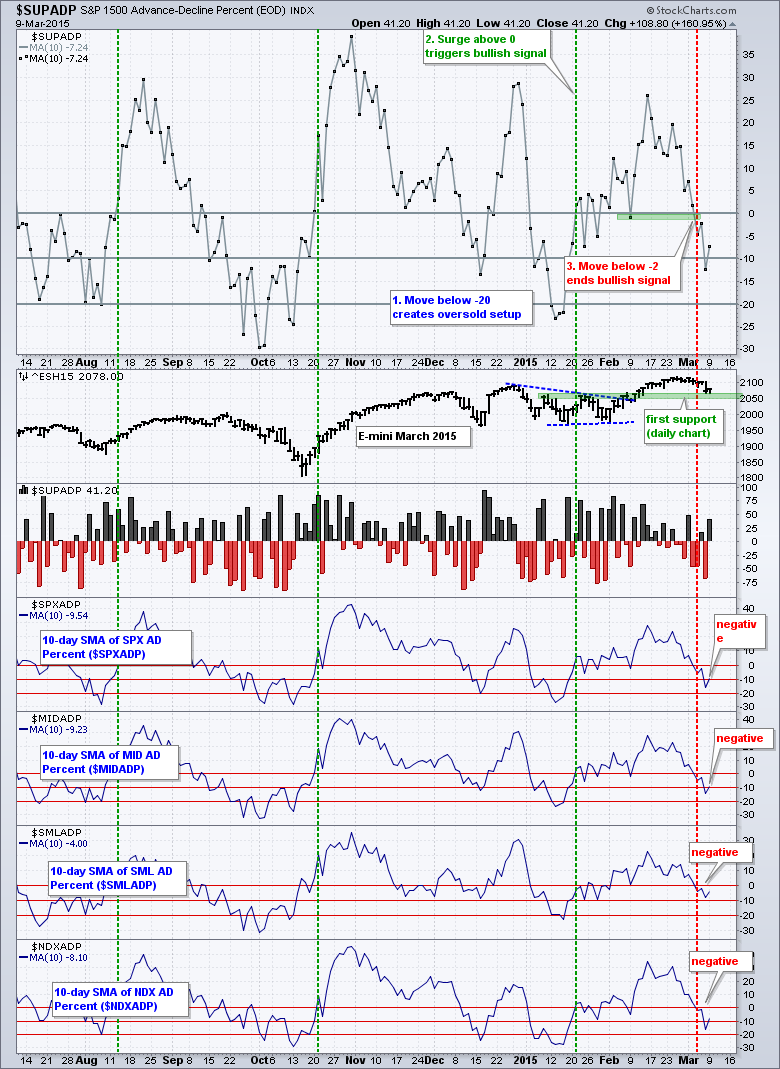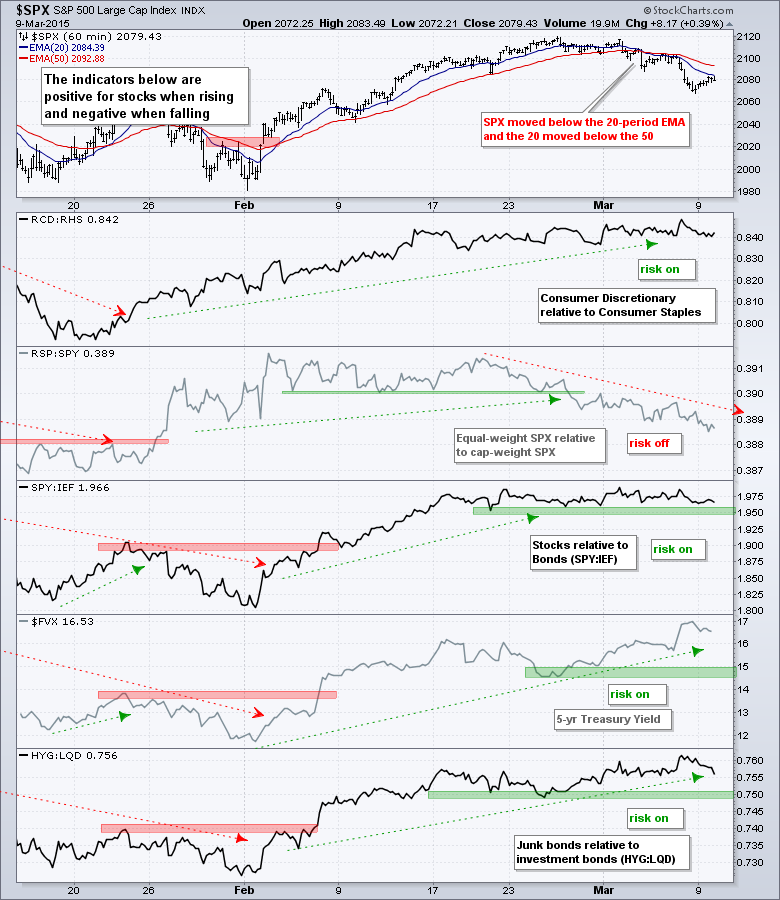After a pummeling on Friday, stocks got an oversold bounce on Monday. But the bounce was not that impressive. QQQ gained .29%, SPY was up .41% and IWM gained .44%. Industrials led the sectors higher and energy lagged. Miners were hit hard as the Gold Miners ETF (GDX) plunged 3.61%, the Metals & Mining SPDR (XME) fell 1.25% and the Silver Miners ETF (SIL) lost over 4%. Virtually anything to do with industrial metals, precious metals and energy is in a downtrend. These are long-term downtrends that show no signs of abating.
**This chart analysis is for educational purposes only, and should not
be construed as a recommendation to buy, sell or sell-short said securities**
Webinar: Julius de Kempenaer, who developed Relative Rotation Graphs (RRGs), and I will be doing a Webinar later today at 1PM ET (Tuesday, March 10th). Julius and I will use a top-down approach to move from sectors to industry groups, and then from industry groups to stocks. Click here to register.
Short-term Overview (Tuesday, 10-March-2015):
- Breadth turned short-term bearish on March 4th.
- The risk indicators remain net positive for stocks (thanks to bonds).
- SPY broke down on March 4th to start a short-term downtrend.
- QQQ broke down on March 6th to start a short-term downtrend.
- IWM is right at support and showing relative strength (thanks to financials).
- TLT broke down on March 2nd to resume a bigger downtrend.
- UUP surged off the lower trend line of a triangle and broke above the upper trend line on 27-Feb.
- USO failed to hold its gains and fell back into a falling wedge pattern.
- GLD plunged to new lows last week and has been in a downtrend since 29-Jan.
The 10-day SMA of S&P 1500 AD Percent ($SUPADP) moved below -2% to trigger a bearish signal on March 4th. AD Percent bounced on Monday, but the +41% reading was not that strong. At this point, I am waiting for the next setup, which means the 10-day SMA needs to move below -20% to become short-term oversold. After this, I will look for an up thrust to signal that the correction may be ending.
No change. On the 60-minute S&P 500 chart, the 20-period EMA moved below the 50-period EMA on March 4th, and the S&P 500 moved below both moving averages that same day. The two stock-related risk indicators remain split. The consumer discretionary sector is outperforming the consumer staples sector (positive), but the equal-weight S&P 500 is underperforming the cap-weight S&P 500 (negative). For now, the bearish EMA cross and relative weakness in the equal-weight S&P 500 tilt towards the bears.
No change. The bond related indicators remain positive because bonds were hit harder than stocks on Friday. The SPY:IEF ratio flattened because both stocks and bonds fell on Friday. The 5-year Treasury Yield ($FVX) surged to 1.7% and remains in an uptrend, which means money is moving out of short-term Treasuries. Junk bonds are outperforming investment grade bonds.
The short-term evidence favors the bears. Breadth is bearish, SPY broke down on March 4th and QQQ broke down on March 6th. The risk indicators are net positive because the bond-related indicators are holding up. IWM is also holding up because of financials, which account for 23.5% of the ETF. I still think this short-term weakness is a correction within a bigger uptrend. There is, however, no telling how long it will last. It will end when it ends (when the short-term evidence turns bullish).
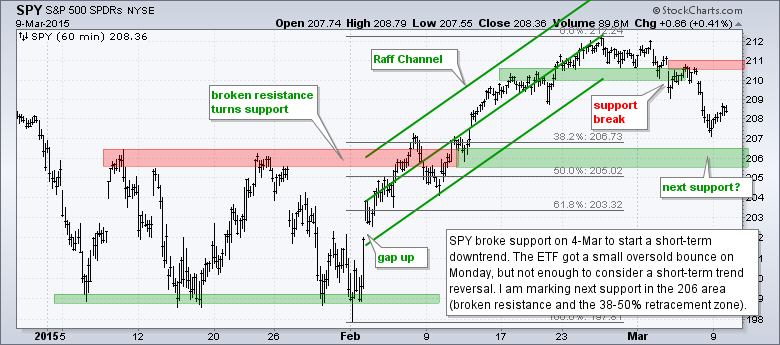
**************************************************************
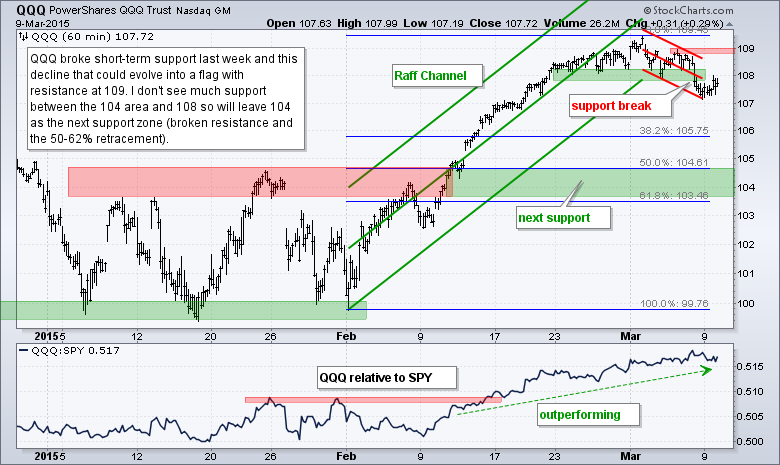
**************************************************************
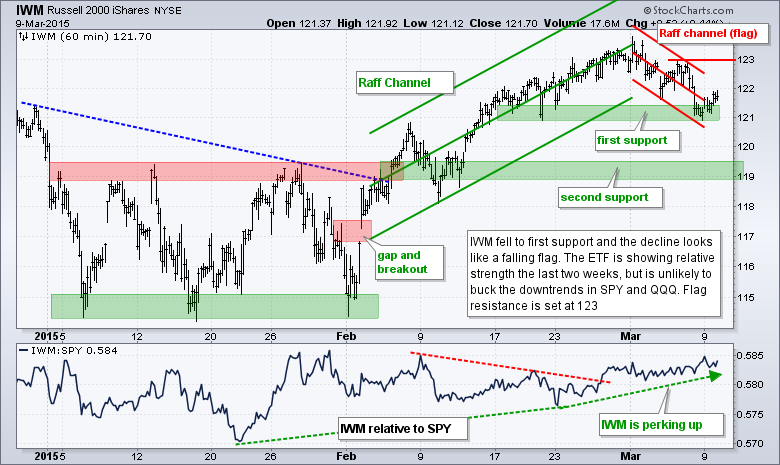
**************************************************************
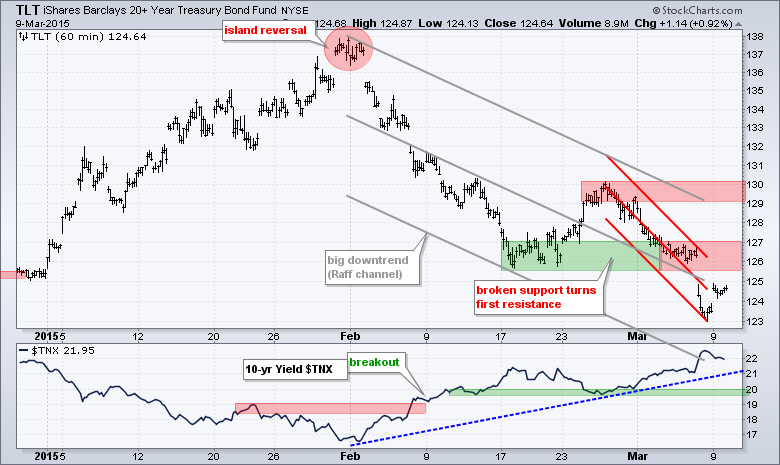
**************************************************************
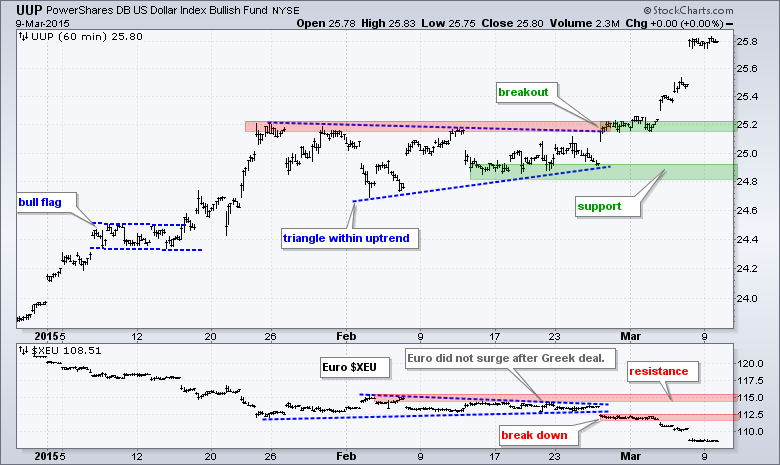
**************************************************************
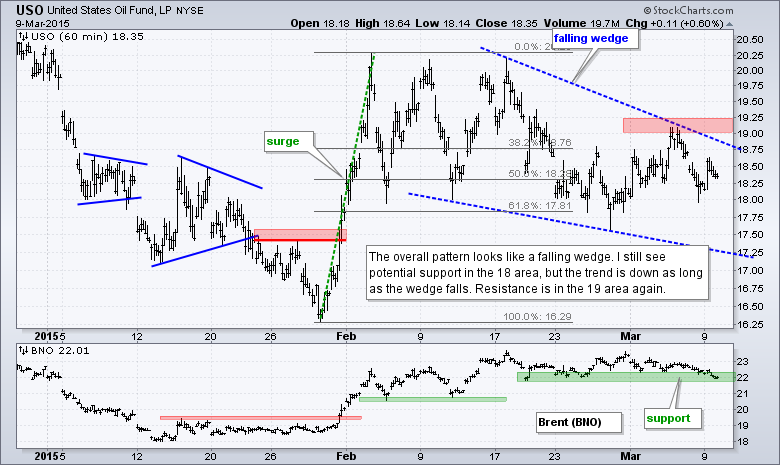
**************************************************************
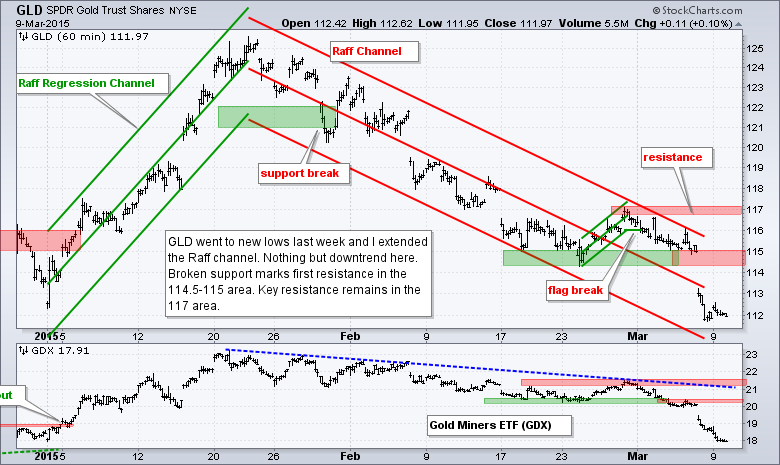
***************************************************************
Key Reports and Events (all times Eastern):
Tue - Mar 10 - 10:00 - JOLTS
Tue - Mar 10 - 10:00 - Wholesale Inventories
Wed - Mar 11 - 07:00 - MBA Mortgage Index
Wed - Mar 11 - 10:30 - Crude Oil Inventories
Thu - Mar 12 - 08:30 - Initial Jobless Claims
Thu - Mar 12 - 08:30 - Retail Sales
Thu - Mar 12 - 10:00 - Business Inventories
Thu - Mar 12 - 10:30 - Natural Gas Inventories
Fri - Mar 13 - 08:30 - Producer Price Index (PPI)
Fri - Mar 13 - 10:00 - Michigan Sentiment
Mon - Mar 16 - 08:30 - Empire State Manufacturing
Mon - Mar 16 - 09:15 - Industrial Production
Mon - Mar 16 - 10:00 - NAHB Housing Market Index
Tue - Mar 17 - 08:30 - Building Permits-Housing Starts
Wed - Mar 18 - 07:00 - MBA Mortgage Index
Wed - Mar 18 - 10:30 - Crude Oil Inventories
Wed - Mar 18 - 14:00 - FOMC Rate Decision
Thu - Mar 19 - 08:30 - Initial Jobless Claims
Thu - Mar 19 - 10:00 - Philadelphia Fed
Thu - Mar 19 - 10:00 - Leading Economic Indicators
Thu - Mar 19 - 10:30 - Natural Gas Inventories
Mon - Mar 23 - 10:00 - Existing Home Sales
Tue - Mar 24 - 08:30 - Consumer Price Index (CPI)
Tue - Mar 24 - 09:00 - FHFA Housing Price Index
Tue - Mar 24 - 10:00 - New Home Sales
Wed - Mar 25 - 07:00 - MBA Mortgage Index
Wed - Mar 25 - 08:30 - Durable Orders
Wed - Mar 25 - 10:30 - Crude Oil Inventories
Thu - Mar 26 - 08:30 - Initial Jobless Claims
Thu - Mar 26 - 10:30 - Natural Gas Inventories
Fri - Mar 27 - 08:30 - GDP
Fri - Mar 27 - 10:00 - Michigan Sentiment
This commentary is designed to stimulate thinking. This analysis is not a recommendation to buy, sell, hold or sell short any security (stock ETF or otherwise). We all need to think for ourselves when it comes to trading our own accounts. First, it is the only way to really learn. Second, we are the only ones responsible for our decisions. Think of these charts as food for further analysis. Before making a trade, it is important to have a plan. Plan the trade and trade the plan. Among other things, this includes setting a trigger level, a target area and a stop-loss level. It is also important to plan for three possible price movements: advance, decline or sideways. Have a plan for all three scenarios BEFORE making the trade. Consider possible holding times. And finally, look at overall market conditions and sector/industry performance.

